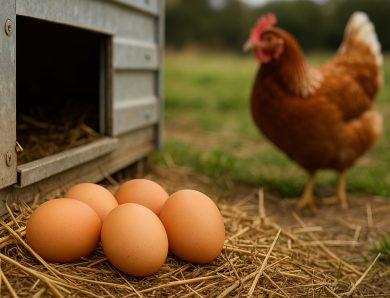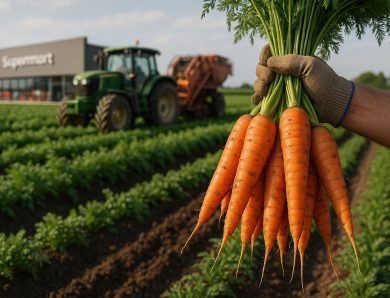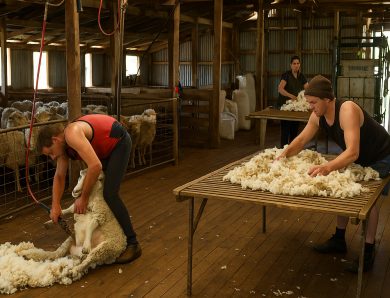
Why Seasonal Eating Makes Sense (and Tastes Better)
Is a strawberry in July the same as one in January? Technically, yes. But taste tells a different story. Seasonal eating isn’t nostalgia; it’s logic. New Zealand’s landscape, shaped by farming traditions and regional microclimates, offers a template for aligning eating habits with nature’s rhythms.
What Is Seasonal Eating?
Seasonal eating means choosing fruits and vegetables at the peak of their natural harvest period. In New Zealand, this practice connects directly with regional soil health, climate timing, and minimal interference from artificial farming methods. It’s a decision that prioritizes freshness, nutrition, affordability, and environmental care.
Why Seasonal Produce Tastes Better
Ripeness makes the difference. Crops grown in-season ripen naturally in the soil and under the sun, absorbing nutrients that contribute to a richer, deeper flavor profile. These foods spend less time in cold storage and transit, and more time on the plant, soaking in the conditions that define their taste.
Consider the following taste comparisons:
- Strawberries: Summer-grown berries are plump, fragrant, and sweet. Winter imports are often underripe and watery.
- Tomatoes: Sun-ripened in summer offer acidity and sweetness. Out-of-season alternatives taste flat and mealy.
- Pumpkins: Autumn harvests bring earthy, dense flesh perfect for roasting. Spring versions lack depth.
Crops forced to grow outside their natural cycle tend to be engineered for durability. Taste takes a backseat to shelf life and travel stability. Many are picked prematurely, treated with ripening agents, and chilled through transit. These disruptions strip flavor layer by layer.
Nutrition Peaks in Season
Produce begins to lose nutritional value the moment it is harvested. Vitamins degrade over time, especially when items are refrigerated, transported long distances, or held in storage.
Seasonal produce tends to retain:
- Higher vitamin content
- Better antioxidant levels
- Greater hydration
- Stronger fiber structure
Summer fruits like tomatoes and capsicums are rich in vitamins A and C. Winter vegetables like kale and broccoli bring fiber, iron, and immune support. Citrus fruits, abundant in colder months, provide vitamin C during flu season. Nature times its output to our biological needs.
Eating with the Seasons Saves Money
Price reflects availability. When a crop is in season, supply is higher, which naturally reduces cost. Out-of-season produce often carries the additional expense of transportation, artificial growing environments, and refrigeration.
Seasonal eating aligns with smart budgeting:
- Buy in bulk when produce peaks
- Freeze or preserve excess for future use
- Choose local over imported for lower logistics costs
Spring asparagus or summer courgettes come in strong quantities, driving market prices down. Eating according to availability reduces reliance on high-cost imports and greenhouse production.
Local Farmers Benefit, Too
Seasonal choices typically mean local purchases. Supporting New Zealand growers keeps money within regional economies and sustains farming communities. Local markets thrive when customers buy what’s fresh rather than what’s fashionable.
Benefits to the economy include:
- Strengthening domestic agriculture
- Encouraging crop diversity
- Reducing dependency on global supply chains
Community Supported Agriculture (CSA) programs, farmers’ markets, and roadside stalls offer seasonal bounty straight from the soil. Every transaction supports a chain of growers, pickers, packers, and transporters who depend on seasonal rhythms.
Smaller Carbon Footprint
Food that travels less pollutes less. Seasonal produce avoids emissions from global freight, refrigeration, and synthetic inputs. Imported fruit often comes via air or long-haul shipping routes that rely on fossil fuels.
Growing crops out of season can also require:
- Heated greenhouses
- Excessive water usage
- Chemical fertilizers and pesticides
By eating seasonally, you reduce demand for energy-intensive farming methods and cut back on food miles, reducing the overall environmental impact.
New Zealand’s Seasonal Guide
Understanding the local calendar can help build a more conscious grocery list. Here’s what grows best during each season:
Spring (September to November):
- Vegetables: Asparagus, artichokes, fresh peas, courgettes, carrots, spinach
- Fruits: Strawberries, kiwifruit, oranges, apples, tangelos
Summer (December to February):
- Vegetables: Tomatoes, capsicum, sweetcorn, cucumber, eggplant
- Fruits: Blueberries, cherries, peaches, nectarines, watermelons
Autumn (March to May):
- Vegetables: Kumara, leeks, silverbeet, yams, parsnips
- Fruits: Feijoas, grapes, plums, pears, figs
Winter (June to August):
- Vegetables: Broccoli, cauliflower, cabbage, kale, swedes
- Fruits: Tamarillos, grapefruit, lemons, mandarins, oranges
Each season offers different nutrient combinations and flavors. Instead of clinging to the same five vegetables year-round, rotating your intake across seasons keeps your diet interesting and more balanced.
How to Transition to Seasonal Eating
Changing habits takes awareness, not overhaul. Seasonal eating starts with small shifts.
Practical steps:
- Check labels for country of origin
- Shop at farmers’ markets before supermarkets
- Plan meals around current produce lists
- Preserve or freeze surplus during peak seasons
- Ask local growers what’s at its best right now
Instead of using a static grocery list, adapt each week’s meals based on what’s fresh and plentiful. Let the stalls guide your choices rather than fixed recipes.
Eating seasonally is common sense with a full plate of benefits. Better flavor. Better nutrition. Lower cost. Lighter footprint. Stronger communities. The land offers its best when we listen to its timing. All we have to do is eat with it.




No Comment